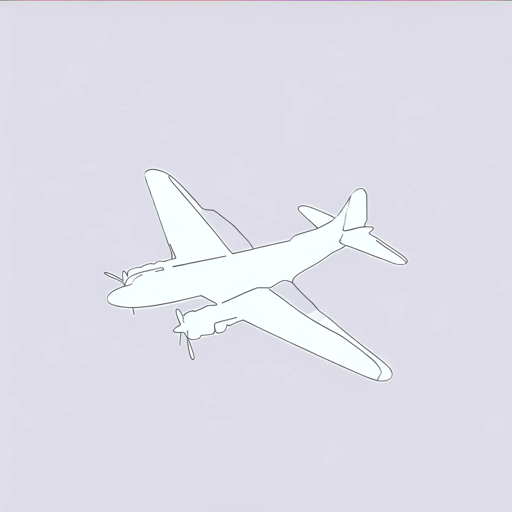52 pages • 1 hour read
Gregory A. FreemanThe Forgotten 500: The Untold Story of the Men Who Risked All for the Greatest Rescue Mission of World War II
Nonfiction | Book | Adult | Published in 2007A modern alternative to SparkNotes and CliffsNotes, SuperSummary offers high-quality Study Guides with detailed chapter summaries and analysis of major themes, characters, and more.
Summary and Study Guide
Overview
Written by American journalist Gregory A. Freeman, The Forgotten 500: The Untold Story of the Men Who Risked All for the Greatest Rescue Mission of World War II (2007) is a narrative history of Operation Halyard, the 1944 rescue of 512 stranded airmen, nearly all of them Americans, who had been shot down over former Yugoslavia. More than a mere description of events, The Forgotten 500 is an attempt to correct the historical record by telling a story long buried beneath official lies.
A writer with decades of experience and many journalistic awards, Freeman interviewed survivors of Operation Halyard, men who were eager to tell not only their own stories but the stories of the loyal Chetniks, whom the Allies abandoned along with the rest of Yugoslavia to endure nearly five decades of Tito-led Communist dictatorship. This guide uses the 2008 Penguin paperback edition.
Summary
In 1943-1944, American airmen made regular bombing runs from their base in Italy designed to knock out Nazi-controlled oil refineries at Ploesti, Romania. When their bombers were damaged in battle, hundreds of airmen bailed out over former Yugoslavia, which was also occupied by Nazi invaders. Upon reaching the ground in safety, the airmen discovered that they had parachuted into the middle of a civil war between Josip Broz Tito’s Communist Partisans on one side and Chetnik forces under the command of General Draza Mihailovich on the other.
Although they had been briefed on the Yugoslav civil war and told to seek out Tito’s Partisans for fear of Mihailovich’s brutal troops and loyalists, the downed Americans learned that Serbians loyal to Mihailovich actually loved the Americans and would risk their lives to protect them: Mihailovich’s Chetnik troops safeguarded the Americans, moving them from village to village to evade Nazi patrols.
Without the Chetniks, Operation Halyard could not have happened. Thanks to Communist moles in American and British intelligence, however, Allied leaders believed that Mihailovich was a Nazi collaborator and that the Allies should support Tito.
Freeman divides the story of the American airmen in The Forgotten 500 into an introduction, 18 chapters, and an epilogue. He uses these chapters to build drama while introducing key figures and laying the groundwork for the rescue narrative.
The first five chapters focus on the individual airmen who bailed out of their B-17 or B-24 bombers and received heroes’ welcomes from the local Serbian villagers as well as protection from General Mihailovich’s Chetnik soldiers. Freeman first introduces Clare Musgrove, a ball turret gunner on a B-24, followed by Tony Orsini and Robert Wilson, both navigators. Chapters 2 and 3 describe each airman’s background and ill-fated mission. Chapters 4 and 5 introduce Mike McKool, Thomas Oliver, and Richard Felman, all of whom have similar experiences: In the villages, the airmen are feted as heroes, fed, sheltered, and hidden from the Nazis. Chetnik troops arrive and guide them to Mihailovich’s stronghold at Pranjane, which turns out to be a safe haven. Along the way, the airmen learn that the Serbian people feel gratitude for the Americans who are risking their lives to help them fight the Nazis. The airmen also learn that the Chetnik soldiers and villagers will sacrifice everything to keep the Americans safe.
Chapters 6-8 introduce George Vujnovich, the agent responsible for directing the rescue in the Office of Strategic Services (OSS), the precursor to the CIA. Freeman describes Vujnovich’s background, his courtship of his wife, Mirjana, and the couple’s dramatic escape from Yugoslavia following the Nazi invasion of April 6, 1941.
The book’s middle chapters take a broader view of the wartime situation and focus on major obstacles to the airmen’s rescue. The most significant obstacle is the make-up of the Allied intelligence services. British intelligence, for instance, is riddled with highly placed Communist moles. With the Soviet Union being a wartime ally of the United States, OSS founder and director William J. Donovan has no qualms about recruiting Communists to aid the war effort. These Soviet agents in both the British and American intelligence forces craft an official anti-Mihailovich narrative that undermines Allied operations and persists for decades.
Chapters 11-16 describe the actual rescue. After Donovan convinces President Franklin D. Roosevelt to authorize the rescue despite British opposition, Operation Halyard is born. Vujnovich oversees the operation from Bari, Italy. He selects George Musulin to direct the operation from the ground. Thanks to prior experience as a radio operator behind enemy lines in Yugoslavia, Arthur Jibilian joins Musulin’s three-man team of OSS agents. Musulin and his fellow agents parachute into Pranjane, where they are welcomed by jubilant Chetniks, including General Mihailovich. With the help of Chetnik soldiers and locals, the airmen construct an impromptu airstrip long enough to accommodate the C-47 cargo planes that will evacuate them. The C-47s arrive on the night of August 9, 1944, and after dramatic landings, the evacuations begun. Musulin decides that the night landings are too dangerous, so the next wave of C-47s, accompanied by US fighter planes, arrives at dawn the next day. Operation Halyard is a resounding success, as evacuations continue for months.
Notwithstanding the heroic efforts of OSS agents, American airmen, Chetnik troops, and Serbian villagers, The Forgotten 500 concludes on a tragic note. Operation Halyard fails to alter US and British policy: Bolstered by Allied support, Tito takes control of postwar Yugoslavia. Under the new Communist regime, Mihailovich is arrested in March 1946, tried by a dictator’s court in June, and executed one week later. The airmen publicize their stories in defense of Mihailovich, but they fail to attract enough attention for the US government to intervene.

